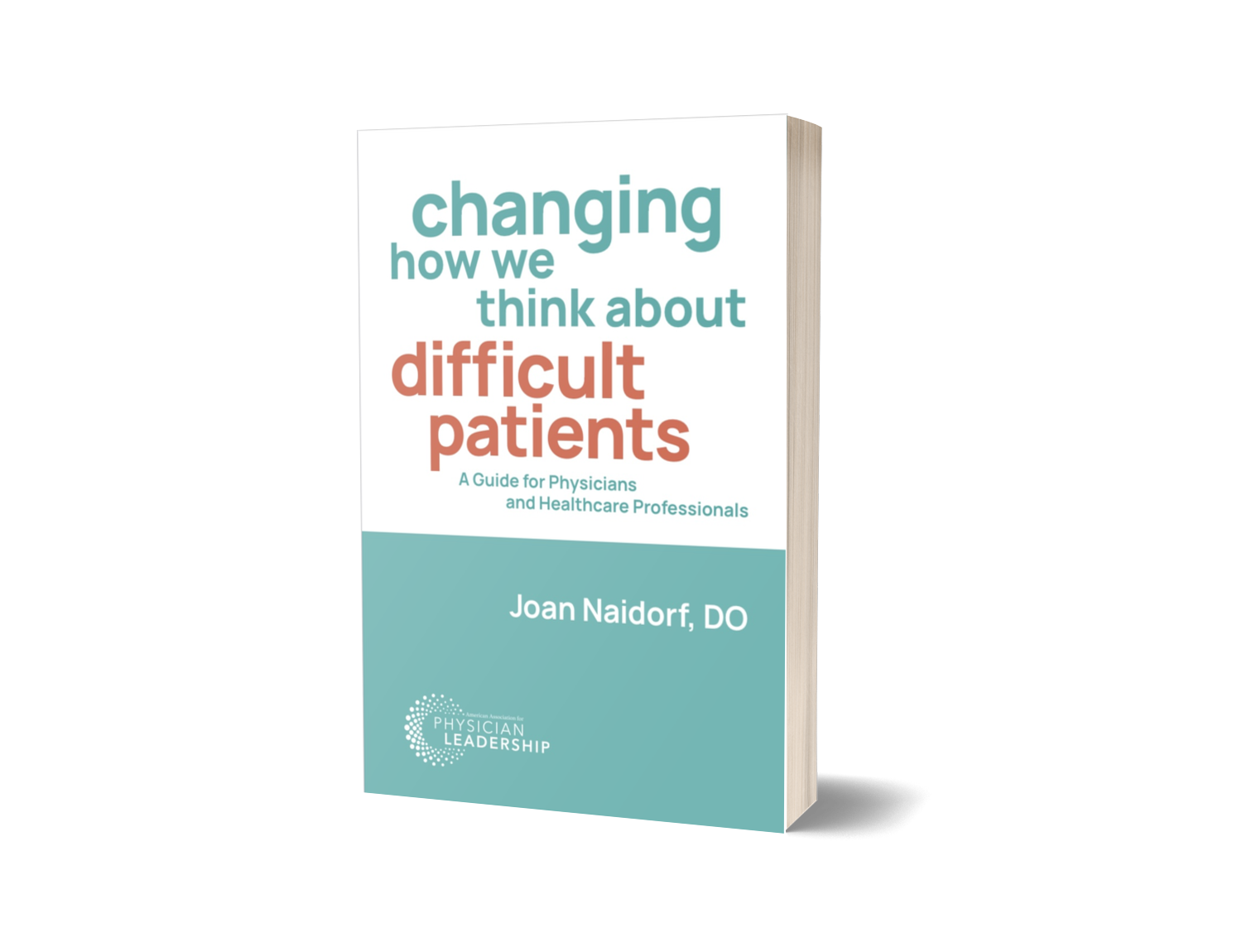#74 Can we Really Solve Any Problem?
I have written about podcasts that I love to listen to while walking or driving. The Life Coach School Podcast with Brooke Castillo is an excellent one, even for people who have no desire or intention of becoming a life coach. Brooke teaches an approach to understanding our interactions with incidents and circumstances in our lives and how we could think about them with more intention. Since our thoughts tend to go negative, we have negative feelings that lead to negative actions and then to sub-optimal results.
Brooke’s Podcast #464 Solve Your Problems is a deceptively insightful gem. In essence, the premise is part of what I have written about in my book, Changing How we Think About Difficult Patients. To paraphrase, the first way to solve any problem, is simply to decide that its not a problem anymore. (WUT?)
To be clear, Brooke’s lesson is not specifically about the “problem” that clinicians have of difficult interactions with some of our patients. I will adapt her ideas to the quandary of difficult interactions that we have with some of our patients or their families. She says, “The first thing that you have to ask yourself is what is a problem? … basically the first step is really understanding that we are the ones that create problems in our minds. A problem isn't a problem until we have a thought about it.”
Whoa! We create the problem?
A crying baby is brought into the emergency department. One resident rushes to take care of her because she loves pediatrics and interacting with children. The other resident is intimidated by the noise and the inability to hear the story from the actual patient. She goes to comb her hair to avoid seeing the child. The same baby is a passion for one resident and a problem for another because of their thoughts about the child.
Using this premise, every patient, situation, or family member comment is neutral until a clinician has a thought about it. Some of the thoughts we have about our challenging patients sound like this:
That fellow should stop smoking.
Mrs. Gray needs to take the medicines as we prescribe them.
That family should have taken their child to the pediatrician’s office.
If these are the problems we define, we can easily solve them. We can just decide that those things are not a problem anymore. This is much more easily said than done. Physicians, nurses and our healthcare colleagues are deeply committed to the notion that our plan should be followed, the medications and vaccinations we offer should be taken, and our word is final. But is this true?
We can change the way we think by adopting the following thoughts:
That fellow can smoke if he chooses.
Mrs. Gray does the best she can with her medications.
That child is here now so let’s make sure she is ok.
Problems gone. There need not be any suffering or judgement on our part about people who don’t behave in the way that we would prefer or approve. We can accept people as they are and where they are. We create the problem, and we can make it go away.
We cannot solve all problematic interactions with our patients by changing our thoughts, and sometimes we don’t want to. We want to hold on to the emotions some difficult interactions leave us with such as feelings of grief, sadness, or disappointment. We get to witness some pretty awful illnesses, injuries and circumstances beyond our control. I want to shed a tear when I share terrible news with a family. I want to feel disappointment when I can’t reduce a dislocated joint or I can’t find a foreign body buried in someone’s foot. These feelings spur me to try harder, position better, and care more.
In her podcast, Brooke goes on to teach, “So once you’ve simply defined the problem and you’ve asked yourself, could I just change my thoughts about it and the answer’s been no. Then the next step is to ask yourself, what is the cause, what is the main cause of this problem and how do I solve for that simply?”
If a patient stops taking a medication because of an unpleasant side effect, can we change the timing or change the medication? If a person cannot stop smoking or drinking because of an underlying addiction, can we get them into a treatment program? If a person has no transportation to a consultant’s office, can we assist with community transport or a taxi chit? To solve the underlying problem, physicians and nurses need to engage more closely and find out why the person is behaving in an unexpected or oppositional sort of way.
For some physicians, a difficult patient can be fired or denied care. That is generally not an option for emergency department patients and would simply be eliminating a problem, not trying to solve it. We can’t make the problematic interaction go away simply by discharging the patients, sending them away, or not letting them in the door in the first place. We have an ethical duty to treat patients with beneficence, nonmaleficence, and with justice. We must do this even if they insult us, threaten us, or generally act like jerks.
Brooke says, “Separate out the circumstances from your thoughts. See where there is any room to redefine the problem but then also ask yourself, are you just trying to eliminate this as a problem or do you want to try and solve this? And you'll know that you’ve solved it because you've created something which is the solution that didn't exist before, the opportunity that didn’t exist before.”
In my application of the concept, a person’s behavior is a problem, not the person herself. I can change the way I define the problem so that the person’s behavior is no longer a problem. If that doesn’t work, I can try to find out the underlying reason for the behavior and try to find solutions for that problem. I have either solved the problem or started the process of finding a solution. In either case, I get better at the skill of problem solving and learn a lot for when this person inevitably returns or another person presents with a similar problem.
Instead of complaining that things should not be this way and why can’t that person behave differently, I can accept reality, become more curious, and start finding useful solutions. We cannot fix everything, but using this approach is much more empowering that playing the injured victim.
In my book, Changing How we Think About Difficult Patients: A Guide for Healthcare Professionals, I take a deep dive into this topic. We have a problem challenging interactions with a minority of our patients and their families. Even a small number of terrible interactions feel terrible for a group of healthcare professionals who are already feeling a lot of other institutional and systems stressors. Doing better with this one problem would help a lot of hard working and well-intentioned healthcare professionals to suffer less.
I teach some of the typical thoughts and responses that both the patients and the clinicians have that can become obstacles during our interactions. Awareness of the starting point is critical for us to arrive in a better place for ourselves and for our patients. We can do and feel a lot better.





